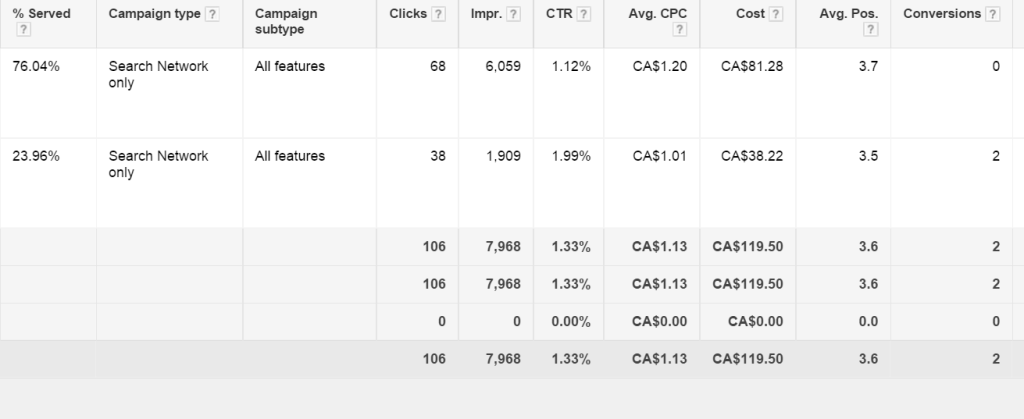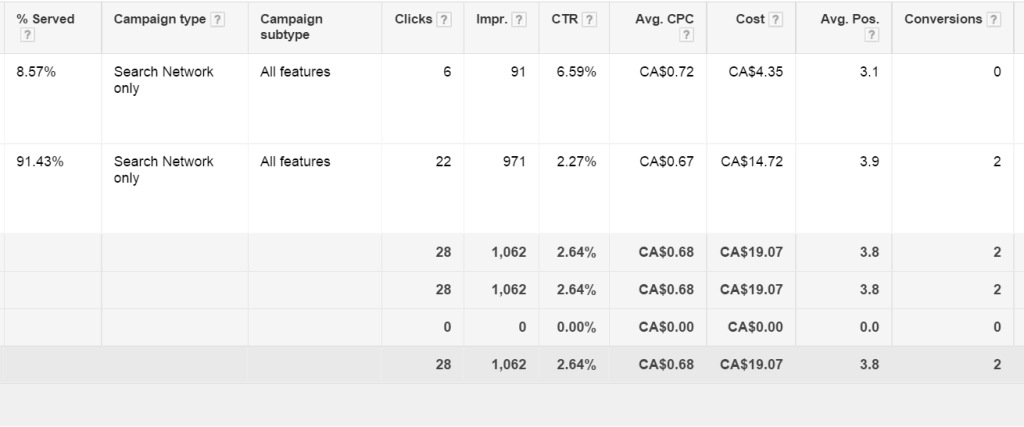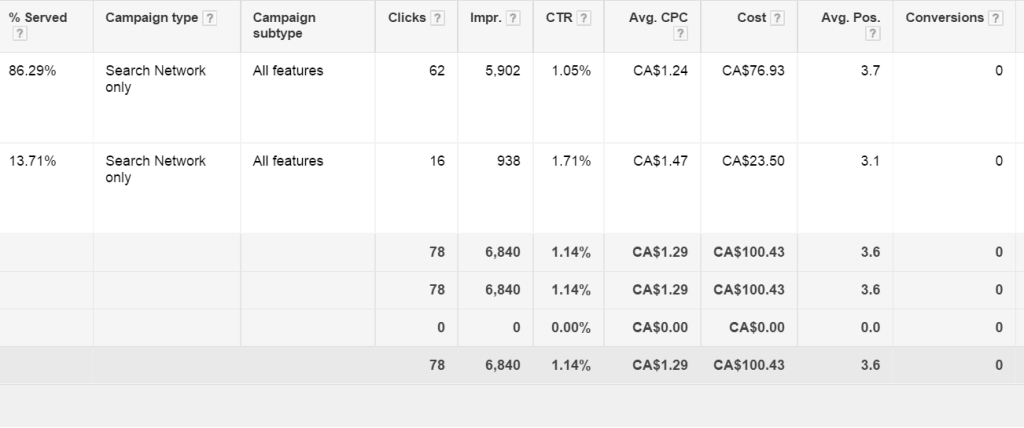The Problem With Google AdWords Ad Rotation Settings
Around Christmas/New Years it’s common to see blog posts like “My Google AdWords Christmas Wishlist” or “Top Feature Request For AdWords in 2015”. I’ve often thought about creating my own list in this vein, and the feature or change that would be at the top of my list that I haven’t seen many people (or anyone) talking about online is an important change to Google’s ad rotation settings.
AdWords currently offers 4 different ad rotations settings:
The default setting is optimized for clicks. Google says this setting is ideal for most advertisers, and it should be (if it worked the way it was supposed to work). However, there is clearly an issue with the sample sizes that Google are looking at in order to determine which ad creative is expected to get more clicks. This produces poor results for the advertiser and Google oftentimes. Take a look at the example below.
The screenshots below are for two ads in a very granular ad group. This first screenshot shows all-time data from July 2014 – February 2015. The second ad creative seems to be the better performing one given it has a CTR 78% higher than the first one, and even though it’s clearly not factored in with this ad rotation setting, it’s also received 2 conversions. The first ad creative has, however, received significantly more impressions. So let’s dive in deeper…
This next screenshot covers the period from July 31st (beginning of the ad group/campaign) through to October 31st. During this time the second ad creative accrued more impressions than the first, presumably, because Google determined that it had the higher expected clickthrough rate. However, the first ad creative did have a CTR nearly 3x what the first ad creative had.
So at this point Google determined from those 91 impressions that the first ad creative must be the one that is going to produce more clicks and since that point it has received 86% of the impressions. Now, you don’t need an advanced degree in statistics to understand that in no world does 91 impressions represent a statistically significant sample size that can be used to predict future behaviour. But many Googlers have all sorts of these types of advanced degrees, so why are the systems that they have designed making such amateur mistakes?
The real frustrating part about this glitch in the system is that it hurts both Google and the advertiser. From Nov – Feb, if the second ad creative was served 86% of the time instead of 14% of the time we could have expected another 22 clicks and an extra $28 or so in revenue for Google. Obviously $28 is an insignificant amount of money for Google, but that’s also a 28 percent increase in revenue. There are likely millions of ad groups where this same type of situation is playing out, and a small tweak in Google’s system could result in a huge increase in revenue for Google and more traffic for the advertisers who really deserve it because they’re creating ads that are highly relevant to the users’ search queries.
So unless you’re getting statistically significant sample sizes of conversion data at the ad group level, your best bet is to change your ad rotation settings to either rotate indefinitely or rotate evenly (for 90 days).








